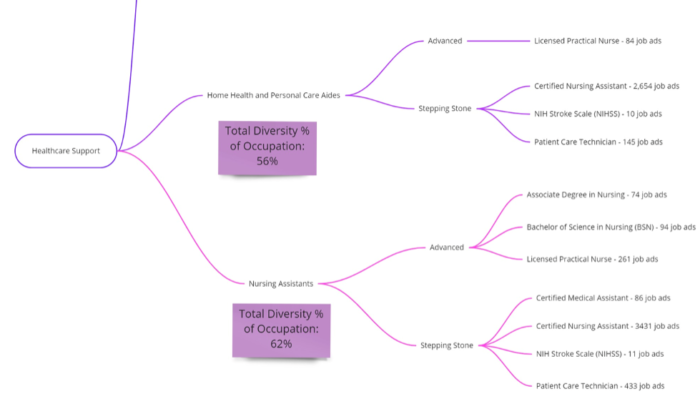Credentials of Value: Building a More Equitable Economy in Detroit

As ESG pursues our goal of increasing the number of working-age adults with a postsecondary credential with labor market value—particularly those who have historically been marginalized from roles that pay a living wage—we are intentional about partnering with those who share our commitment to equity. To that end, ESG continues to build new relationships with and deepen our support for like-minded, equity-focused leaders in communities across the country. One particular community with which we’ve engaged in deep strategic work is Detroit, Michigan.
Like many communities, Detroit is working hard to ensure that education and training programs are closely aligned with workforce needs and that historically marginalized groups are not left out of economic recovery strategies. Building on other equity-focused efforts in the region—namely the Detroit Drives Degrees initiative and Michigan’s 60 by 2030 attainment goal—ESG’s latest partnership with the Detroit Regional Chamber was driven by questions at the core of that commitment: what are the most in-demand credentials available in the region that pay a living wage, and how can leaders design career pathways to move more learners, especially low-wage Black workers, toward those credentials?
We kicked off this work by using ESG’s framework for identifying high-value credentials. We analyzed real-time labor market information and workforce projections to understand current and future job openings and associated wages in the Detroit region, and we used that market analysis to determine priority occupations and associated credentials. But the data only tells us part of the story; throughout that process, we consulted with a core working group of regional employers to confirm the importance of our findings to their talent development needs. We sought additional feedback from employers across the region through surveys and focus groups with representatives from key industries—specifically in the mobility, finance, information technology, healthcare, and construction industries—to give them the opportunity to weigh in on which credentials they value most in their hiring efforts. While the employer surveys helped validate the priority credentials that appeared in the labor market information, industry specific focus groups shed light on recruitment, hiring, and upskilling challenges local employers face. As the labor market continues to evolve, this is a process the Chamber will revisit every few years.
With a clearer understanding of high-value credentials and the labor market in hand, we turned our consideration to examining the educational pathways offered at local higher education institutions. Our goal was two-fold: First, we analyzed the pathways offered at institutions to understand the extent to which they are aligned with the priority occupations and credentials uncovered in our earlier round work. Those results give Detroit a clear sense of how available and accessible programs are that lead to priority credentials for learners.
Second, we used that information to address a major equity priority for Detroit to move low-wage Black workers to higher-wage opportunities throughout the region. While the ultimate goal of this work is providing pathways toward economic mobility, the steps to move from a minimum wage job to an in-demand, ALICE-defined Family Sustaining job (in this case, $32/hour) are not always clear. As a step toward this goal, we identified low-wage, high-demand occupations with high populations of workers of color. Then, using CIP to SOC crosswalks (a tool that maps education programs with priority occupations), we linked those occupations to local postsecondary options in which credentials of value may be embedded—making it clear how workers in those low-wage, high-demand jobs can move into occupations with higher wages.
We created visualizations to bring this information to life for Detroit. For example, 62 percent of Nursing Assistants are diverse employees in Detroit who earn approximately $15.39/hour. Suppose they were to continue their education and training along a pathway that allows them to pursue additional in-field credentials. In that case, they could move in a step-like fashion to higher-paying roles along the same career pathway, such as Registered Nurses, which pays approximately $36.25/hour. However, pathways and related policies must be intentionally designed to enable and incentivize this type of progression. Employers have a key role in enacting this policy change and moving employees along a pathway, and the Chamber is there to give employers the support they need to lead in this area.

Finally, our project team provided a set of recommendations to start taking action. From enlisting the support of the employer community to supporting K-12 and community colleges in creating a shared vision for building a diverse talent pipeline and operationalizing pathways with stackable credential programs, each of the recommendations and associated implementation strategies requires cross-sector partnership and collective ownership to drive educational equity and economic mobility. We understand there are major challenges facing students of color and those from low socioeconomic backgrounds. Making a change in the system requires concrete action, and ESG is proud to continuously partner with organizations like the Detroit Regional Chamber who are equally committed to tackling racial inequities through concrete action.



